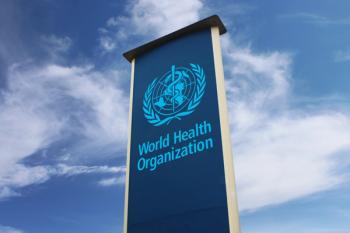
Gaps Remain in HPV Vaccine Coverage for Children Due to COVID-19 Pandemic
The monthly volume of human papillomavirus (HPV) vaccine doses administered have returned to the level observed prior to the COVID-19 pandemic among children in an integrated health care system in California, but HPV vaccine coverage remains lower compared with prepandemic levels.
The percentage of children with up-to-date
Historically, uptake of the HPV vaccine has been lower compared with other vaccines among children and adolescents. Researchers note that a steady increasing trend in HPV vaccine coverage (% vaccinated) in adolescents has been observed nationally since 2006, but the substantial disruptions to preventive care services caused by the COVID-19 pandemic have been shown to impact this progress.
“Little is known about whether the HPV vaccine administration pattern persisted throughout the pandemic and how HPV vaccine coverage is affected,” said the study authors. “Such data will be critical to inform strategies to reduce potential disparities.”
They conducted an analysis of data from electronic medical records at Kaiser Permanente Southern California (KPSC), a large integrated health care delivery system serving over 4.7 million members, to assess monthly volume of HPV vaccine doses administered among children aged 9 to 12.9 years, and up-to-date coverage by age 13 between March 1, 2019, to September 30, 2021.
The study also examined the impact of the COVID-19 pandemic on HPV vaccination by race/ethnicity and neighborhood deprivation index (NDI). Modified Poisson models were used to evaluate the interactions between race/ethnicity, NDI, and the pandemic periods on HPV vaccine coverage.
“HPV vaccination is offered at KPSC without cost and can be obtained at primary care and pediatric clinics, nurse clinics, urgent care, or emergency rooms,” explained researchers.
From March to April 2020, there was a large decline in administered HPV vaccine doses, which returned to the 2019 level by May 2020. Another decline was observed in January 2021, followed by a rapid reversal as of February 2021. Similar patterns were observed across sex and race/ethnicity.
Findings further indicated that the average up-to-date coverage in May 2021 to September 2021 (54.8%) remained lower than the prepandemic level (58.5%). The associations between race/ethnicity, NDI, and HPV vaccine coverage did not vary due to the pandemic.
As HPV vaccine uptake patterns during the pandemic may have varied by state and health care systems, researchers said results may not generalize to those outside of California, who are uninsured, or not in an integrated health care system.
“System efforts for promoting childhood and adolescent vaccination during a pandemic are likely necessary to ensure adequate vaccination rates. Enhanced efforts are needed to bring back the HPV vaccination coverage level in children,” they concluded.
Reference
Chao CR, Xu L, Cannizzaro N, et al. Trends in HPV vaccine administration and HPV vaccine coverage in children by race/ethnicity and socioeconomic status during the COVID-19 pandemic in an integrated health care system in California. Vaccine. 2022;40(46):6575-6580. doi:10.1016/j.vaccine.2022.09.073
Newsletter
Stay ahead of policy, cost, and value—subscribe to AJMC for expert insights at the intersection of clinical care and health economics.













































